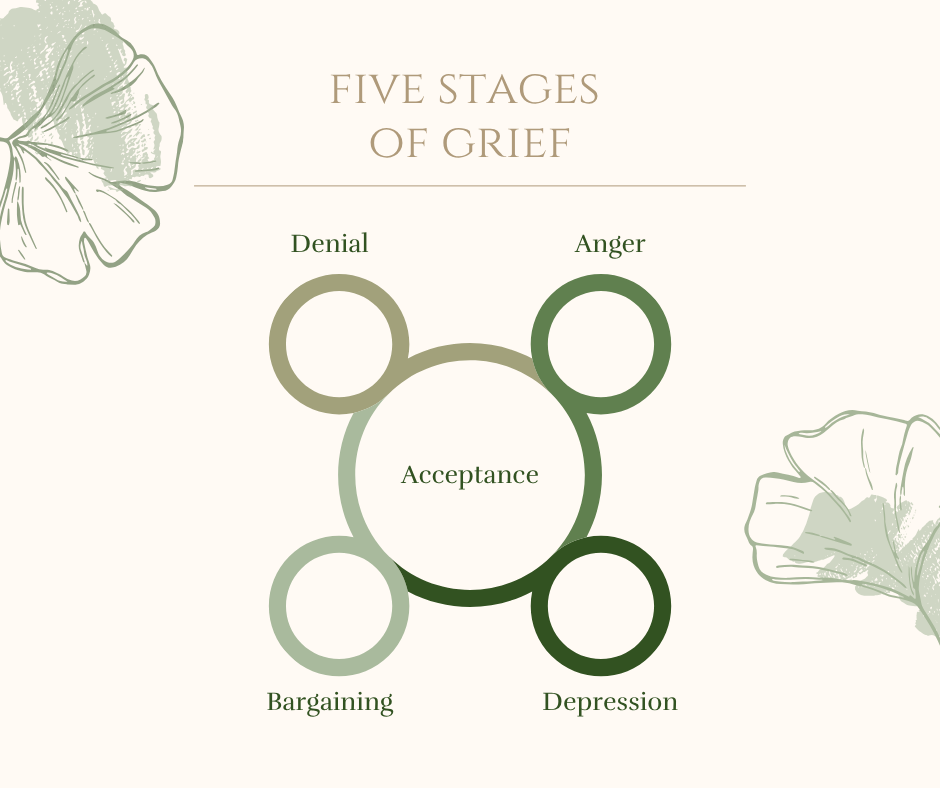How to Cope with Grief
Grief has a way of showing up and taking over the room. It’s heavy, unpredictable, and deeply personal—and yet, it’s something every one of us will face at some point. One of the most important things to know about grief is that it doesn’t follow a neat, linear path. You don’t simply move through one stage and then check it off the list. Grief loops and folds back on itself. You can live in anger for years before you touch acceptance. You can wake up feeling okay one morning, only to be undone by a song on the radio that same afternoon.
I once heard a description of grief that has always stayed with me. Imagine being in a room with a giant button right in the middle of it. In the early days of loss, the button takes up almost the entire space—every time you move, you bump into it, and it knocks you to your knees. Over time, the button shrinks. It never goes away completely, but you can move around more freely. Then one day, something—a scent, a song, an anniversary—hits that button again. The pain can feel just as sharp as it did before, but it doesn’t last as long. That’s the nature of grief. It changes shape, but it doesn’t disappear.
The Many Faces of Grief
When we think of grief, we often picture the death of a loved one—but loss wears many faces. It can be the end of a marriage, the loss of a friendship, the shattering of a dream, or a child’s diagnosis that changes the life you imagined for them. It can be the injury that ends a career or the miscarriage that ends a hope. Each of these carries its own kind of mourning.
Psychiatrist Elisabeth Kübler-Ross originally identified five stages of grief: denial, anger, bargaining, depression, and acceptance. Over time, others have expanded or redefined them, but what’s most helpful to know is that they don’t happen in order, and there’s no timeline.
Denial often looks like emotional numbness. It’s the brain’s way of protecting us from a reality too painful to absorb all at once.
Anger comes next for many—anger at the person who’s gone, at God, at ourselves. It can be explosive or simmer quietly under the surface.
Bargaining often sounds like “If only I had…” or “What if things had been different?” It’s an attempt to rewrite the story, to find some sense of control.
Depression is the stage where the loss feels real. There’s an ache, a helplessness, a recognition that life is forever changed.
And finally, acceptance doesn’t mean the pain is gone—it means you begin to make peace with the fact that this loss is now part of your story. You start to ask: “How do I live with this? How do I move forward?”
Even with acceptance, grief has a way of resurfacing at milestones—a birthday, a holiday, a graduation. Those moments can knock the wind out of you all over again, and that’s normal. Healing doesn’t mean forgetting.
Sitting With the Hard Stuff
Grief is messy, and we don’t do it well in our culture. We tend to rush it, to hide it, to try to make it neat. Other cultures make more space for collective mourning—they sit together, cry together, eat together. In America, we bring the casseroles, we attend the funeral, and two weeks later, we ask, “Are you doing better?” But grief doesn’t work on a two-week timeline. Sometimes, people don’t even begin to feel the loss until months later, when the logistics are handled and the silence sets in.
That’s one reason therapy can be so helpful. It’s a place to say the things that feel taboo: “I’m angry at my husband for getting sick.” “I’m mad at God.” “I feel jealous when my friend announces her pregnancy.” These are honest emotions, and they need space to exist. When we let them stay buried, they block healing.
What to Say (and What Not to Say)
If someone you love is grieving, remember this: your job isn’t to fix it. It’s to be present. Don’t rush to fill the silence or offer platitudes like “Everything happens for a reason” or “God has a plan.” Even “I’m sorry” can land wrong if it pressures the grieving person to reassure you that it’s okay—because it’s not.
Instead, try simple, grounding phrases like:
“I’m here for all of it.”
“You’re not alone.”
“When you’re ready to talk about them, I’m ready to listen.”
“It’s okay to feel what you’re feeling.”
And then—keep showing up. Send a message even if they don’t respond. Be willing to sit in the uncomfortable moments. Let them tell the same story again. Ask about memories. Talk about their person by name.
Because the truth is, grief doesn’t need fixing. It needs witness. It needs compassion. It needs time.


